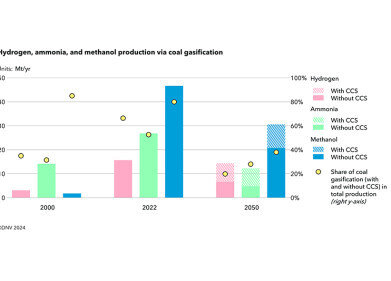Green Energy
What is the Ecomodernist Manifesto?
Oct 16 2015
The Ecomodernist Manifesto is a 6,000-word dissertation on the future of our planet and our responsibility for its sustainability penned by 18 researchers, the majority of which are connected to the Californian think tank, the Breakthrough Institute.
It was published in April of 2015 and challenges the widely-held environmental belief that we should limit our impact on the Earth and its resources, but rather embrace this impact and use it to better sustain our environment.
The Tenets of the Ecomodernist Manifesto
The manifesto begins by acknowledging the damage that humans have wrought upon the Earth and the immediate need for us to “decouple” ourselves from nature. Among other ills, the manifesto points out:
- The polluted state of air worldwide, which kills 3.2 million people globally every year
- The decimation of fauna on Earth, with many mammals, birds and amphibians species diversity having been halved over the last 40 years
- The use of around half of Earth’s ice-free land for habitation, agriculture and industry
- The widespread occurrence of water pollution and its resulting effects on people and animals
However, the manifesto then goes on to point out how our current impact (per capita) is lower than it has ever been on the environment. The fact that we are seeing such consequences now is merely due to the fact that the population on Earth is higher than it has ever been. In terms of individual footprints, the manifesto claims that we have improved dramatically over the past two centuries – and it claims that this is down to advanced technology.
The Solutions Proposed by the Manifesto
The manifesto controversially champions nuclear power – both fission and fusion – as feasible solutions to our energy crisis, and earmarks solar power as a potential energy source of the future, provided that the technology makes significant advances in efficiency and power.
However, it dismisses the renewable technologies of wind and wave as taking up too many resources (both natural and economical) without giving back enough. Interestingly, it also defends the use of pesticides and fertiliser (which have come under increasing criticism for the strain they place upon invertebrate populations, especially bees), citing them as a means to increase agricultural production and meet the world’s growing food demands.
Reactions to the Manifesto
Predictably, the championing of nuclear power has raised eyebrows from some quarters, as has the offhand dismissal of a range of renewable energy technologies. It’s not only the content which has ruffled feathers, though – the tone of the manifesto has also drawn criticism.
Its contrary and sometimes downright antagonistic tone has earned it critics among many prominent environmentalists, including from Dave Foreman, the co-founder of Earth First!, an environmental group. “I don’t see any of the humility or caution that’s such a central part of pragmatism.” he explains. “Where is the grief? Where is the shame? Where is the passion to save what’s left?”
Whether or not the manifesto is correct in all of its assumptions and ideas, it’s refreshing to see environmentalists challenge the preconceptions of their fellows and raise new potential solutions to our problems. Regardless of if their style is appropriate, we can surely all agree that the Anthropocene (the “Human Age” – i.e. now) must shoulder its responsibilities to the Earth our risk destroying it.
Events
May 05 2024 Seville, Spain
May 13 2024 Munich, Germany
May 23 2024 Beijing, China
May 23 2024 Beijing, China
Jun 10 2024 Algiers, Algeria














